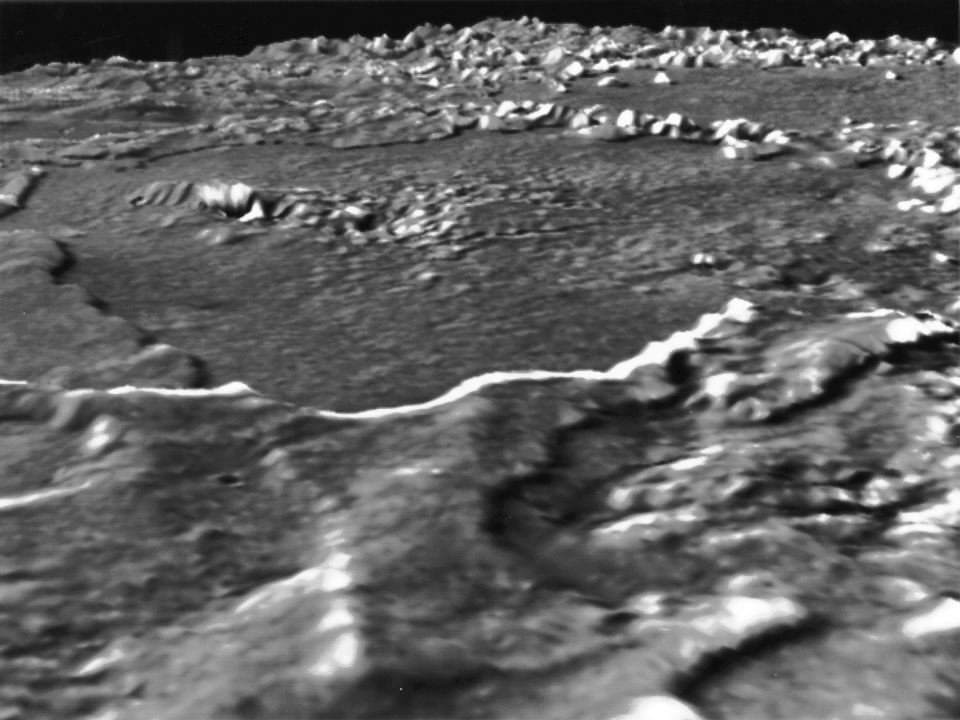
Like the other giant planets, Neptune consists primarily of hydrogen, helium, water, and other volatile compounds, along with rocky material, and it has no solid surface. It is more massive than Uranus, however, having a density roughly 25 percent higher. Neptune is almost four times the size of Earth but slightly smaller than Uranus, which makes it the smallest in diameter of the four giant, or Jovian, planets. Magnetic field strength at equator (mean) Neptunian year (sidereal period of revolution) **Calculated for the altitude at which 1 bar of atmospheric pressure is exerted. *Time required for the planet to return to the same position in the sky relative to the Sun as seen from Earth.

Although the dwarf planet Pluto’s mean distance from the Sun is greater than Neptune’s, its orbit is so eccentric (elongated) that for about 20 years of each revolution Pluto is actually nearer the Sun than is Neptune. Neptune’s orbit is almost perfectly circular as a result, its distance from the Sun varies comparatively little over its nearly 164-year period of revolution. Its discovery in 1846 was a remarkable combination of the application of solid Newtonian physics and a belief in a numerological scheme that later proved to be scientifically unfounded ( see below Neptune’s discovery). It is the second planet to have been found by means of a telescope. Neptune is named for the Roman god of the sea, who is identified with the Greek deity Poseidon, a son of the Titan Cronus (the Roman god Saturn) and a brother of Zeus (the Roman god Jupiter). Each of these cloud features was seen to travel eastward but at a different rate, the Great Dark Spot moving the slowest. Just above that spot is a bright cloud dubbed Scooter. At higher southern latitudes lies a smaller, eye-shaped dark spot with a light core (bottom left). Accompanying it are bright, wispy clouds thought to comprise methane ice crystals. The Great Dark Spot (centre left) is 13,000 km (8,100 miles)-about the diameter of Earth-in its longer dimension. The view is from below the planet's equator, and north is up. SpaceNext50 Britannica presents SpaceNext50, From the race to the Moon to space stewardship, we explore a wide range of subjects that feed our curiosity about space!Ĭlouds in Neptune's atmosphere, photographed by Voyager 2 in August 1989.Learn about the major environmental problems facing our planet and what can be done about them! Saving Earth Britannica Presents Earth’s To-Do List for the 21st Century.Britannica Beyond We’ve created a new place where questions are at the center of learning.100 Women Britannica celebrates the centennial of the Nineteenth Amendment, highlighting suffragists and history-making politicians.
#Neptunes description how to
COVID-19 Portal While this global health crisis continues to evolve, it can be useful to look to past pandemics to better understand how to respond today.Student Portal Britannica is the ultimate student resource for key school subjects like history, government, literature, and more.From tech to household and wellness products.


This Time in History In these videos, find out what happened this month (or any month!) in history.#WTFact Videos In #WTFact Britannica shares some of the most bizarre facts we can find.Demystified Videos In Demystified, Britannica has all the answers to your burning questions.Britannica Explains In these videos, Britannica explains a variety of topics and answers frequently asked questions.Britannica Classics Check out these retro videos from Encyclopedia Britannica’s archives.


 0 kommentar(er)
0 kommentar(er)
